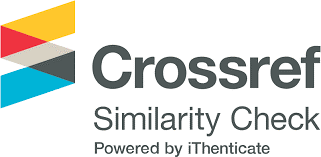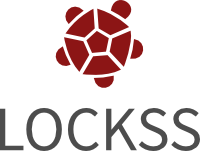A High Step-Up Isolated DC-DC Converter Based on Cascaded Greinacher Voltage Multiplier
DOI:
https://doi.org/10.18618/REP.2023.1.0038Keywords:
Isolated SEPIC, Magnetizing current, Voltage step-up cellsAbstract
High step-up converters are required and used in photovoltaic applications, due to low voltage of photovoltaic modules. In this paper, an isolated dc-dc high step-up SEPIC with a Greinacher voltage quadrupler cell is proposed. It has the advantage of continuous input current, high efficiency, high voltage gain, isolation and demands a single switch, being suitable for low power grid-tie photovoltaic systems. The derivation of converter, the operating principles and steady-state analysis are presented, including the detailed analysis of resonant stage, where the value of primary side capacitor is taken into account. Besides that, effects of transformer winding capacitances on converter operation are investigated. Experimental results on a 37.4/400 V, 50 kHz and 200 W prototype are presented to validate the proposed topology and concept, where the maximum efficiency obtained is 97.75%.
Downloads
References
Y.Zheng, W. Xie and K. M. Smedley, "A Family of Interleaved High Step-Up Converters With Diode-Capacitor Technique",IEEE Journal of Emerg. and Sel. Topics in Power Electron.," vol. 8, nº2, pp. 1560-1570, June 2020. https://doi.org/10.1109/JESTPE.2019.2907691 DOI: https://doi.org/10.1109/JESTPE.2019.2907691
W.Li and X. He, "Review of non isolated high-step-up dc/dc converters in photovoltaic grid-connected applications",IEEE Trans. Ind.Electron., vol. 58, nº4, pp. 1239-1250, Apr. 2011. https://doi.org/10.1109/TIE.2010.2049715 DOI: https://doi.org/10.1109/TIE.2010.2049715
L. Schmitz, D. C. Martins and R. Coelho, "Generalized High Step-Up DC-DC Boost-Based Converter With Gain Cell",IEEE Trans. Circuits Syst. I: Reg. Papers, vol. 64, nº2, pp. 480-493, Feb, 2017. https://doi.org/10.1109/TCSI.2016.2603782 DOI: https://doi.org/10.1109/TCSI.2016.2603782
K. Zaoskoufis and E. C. Tatakis, "An Improved Boost-Based dc/dc Converter With High-Voltage Step-Up Ratio for DC Microgrids",IEEE Journal of Emerg. and Sel. Topics in Power Electron., vol. 9, nº2, pp. 1837-1853, April 2021. https://doi.org/10.1109/JESTPE.2020.2981018 DOI: https://doi.org/10.1109/JESTPE.2020.2981018
K.-B. Park, G.-W.Moon and M.-J. Youn, "Non isolated high step-up stacked converter based on boost-integrated isolated converter",IEEE Trans. Power Electron., vol. 26, nº2, pp. 577-587, Feb. 2011. https://doi.org/10.1109/TPEL.2010.2066578 DOI: https://doi.org/10.1109/TPEL.2010.2066578
A.P. Meurer, A. M. S. S. Andrade, M. Mezaroba, M. L. S. Martins and H. L. Hey, "Module Integrated Buck Inverter: Analysis and Design",IEEE Trans. on Industry Appl., vol. 55, nº5, pp. 5013-5022, Sept.-Oct. 2019. https://doi.org/10.1109/TIA.2019.2927315 DOI: https://doi.org/10.1109/TIA.2019.2927315
X.Hu, J. Wang, L. Li and Y. Li, "A Three-Winding Coupled-Inductor DC-DC Converter Topology With High Voltage Gain and Reduced Switch Stress",IEEE Trans. on Power Electron., vol. 33, nº2, pp. 1453-1462, Feb. 2018. https://doi.org/10.1109/TPEL.2017.2689806 DOI: https://doi.org/10.1109/TPEL.2017.2689806
H. Wu, T. Mu, H. Ge and Y. Xing, "Full-Range Soft-Switching-Isolated Buck-Boost Converters With Integrated Interleaved Boost Converter and Phase-Shifted Control",IEEE Trans. on Power Electron., vol. 31, nº2, pp. 987-999, Feb. 2016. https://doi.org/10.1109/TPEL.2015.2425956 DOI: https://doi.org/10.1109/TPEL.2015.2425956
J. Lee, T. Liang and J. Chen, "Isolated Coupled-Inductor-Integrated DC-DC Converter With Non dissipative Snubber for Solar Energy Applications",IEEE Trans. on Indust. Electron., vol. 61, nº7, pp. 3337-3348, July 2014. https://doi.org/10.1109/TIE.2013.2278517 DOI: https://doi.org/10.1109/TIE.2013.2278517
K. Tseng, C. Huang and C. Cheng, "A High Step-Up Converter With Voltage-Multiplier Modules for Sustainable Energy Applications",IEEE Journal of Emerg. and Sel. Topics in Power Electron., vol. 3, nº4, pp. 1100-1108, Dec. 2015. https://doi.org/10.1109/JESTPE.2015.2404943 DOI: https://doi.org/10.1109/JESTPE.2015.2404943
C.Vartak, A. Abramovitz and K. M. Smedley,"Analysis and Design of Energy Regenerative Snubber for Transformer Isolated Converters",IEEE Trans. on Power Electron., vol. 29, nº11, pp. 6030-6040, Nov. 2014. https://doi.org/10.1109/TPEL.2014.2301194 DOI: https://doi.org/10.1109/TPEL.2014.2301194
E. Dzhunusbekov and S. Orazbayev, "A New Passive Lossless Snubber",IEEE Trans. on Power Electron., vol. 36, nº8, pp. 9263-9272, Aug. 2021. https://doi.org/10.1109/TPEL.2021.3056189 DOI: https://doi.org/10.1109/TPEL.2021.3056189
A.F.Witulski,"Introduction to modeling of transformers and coupled inductors",IEEE Trans. on Power Electron., vol. 10, nº3, pp. 349 357, May 1995. https://doi.org/10.1109/63.388001 DOI: https://doi.org/10.1109/63.388001
T. M. K. Faistel, R. A. Guisso, A. M. S. S. Andrade and M. L. d. S. Martins, "Comparative evaluation of a family of isolated Ćuk DC/DC converter with step-up techniques", IET Power Electron., vol.13, nº16, pp. 3637-3650, Dec. 2020. https://doi.org/10.1049/iet-pel.2020.0151 DOI: https://doi.org/10.1049/iet-pel.2020.0151
R. W. Erickson andD. Maksimovic, "A multiple winding magnetics model having directly measurable parameters", in Proc. 29th Annual IEEE Power Electron. Special. Conf., May 1998.
A. Alzahrani, M. Ferdowsi and P. Shamsi, "A Family of Scalable Non-Isolated Interleaved DC-DC Boost Converters With Voltage Multiplier Cells",IEEE Access, vol. 7, pp. 11707-11721,Jan.2019. https://doi.org/10.1109/ACCESS.2019.2891625 DOI: https://doi.org/10.1109/ACCESS.2019.2891625
B. Axelrod, Y. Berkovich, A. Shenkman and G. Golan, "Diode-capacitor voltage multipliers combined with boost-converters: Topologies and characteristics",IET Power Electron., vol. 5, nº6, p. 873-884, July 2012. https://doi.org/10.1049/iet-pel.2011.0215 DOI: https://doi.org/10.1049/iet-pel.2011.0215
J. Yao, A. Abramovitz and K. M. Smedley, "Analysis and Design of Charge Pump-Assisted High Step-Up Tapped Inductor SEPIC Converter With an "Inductorless" Regenerative Snubber",IEEE Trans. on Power Electron., vol. 30, nº10, pp. 5565-5580, Oct. 2015. https://doi.org/10.1109/TPEL.2014.2374992 DOI: https://doi.org/10.1109/TPEL.2014.2374992
B. Andres, L. Romitti, F. H. Dupont, L. Roggia and L. Schuch, "Analysis and Design of Isolated SEPIC Converter with Greinacher Voltage Quadrupler Multiplier Cell",in Proc. 13th Seminar on Power Electron. and Control, Oct. 2021. https://doi.org/10.53316/sepoc2021.049 DOI: https://doi.org/10.53316/sepoc2021.049
B. Andres, L. Romitti, F. H. Dupont, L. Roggia and L. Schuch, "Analysis and Design of Isolated SEPIC Converter with Greinacher Voltage Multiplier Cell",in Proc. XXIII Congresso Brasileiro de Automática, Nov. 2020. https://doi.org/10.48011/asba.v2i1.1313 DOI: https://doi.org/10.48011/asba.v2i1.1313
B. Dalessandro, F. d. S. Cavalcante and J. W. Kolar, "Self-"Self-"Self Capacitance of Hihg-Voltage Transformers",IEEE Trans. on Power Electron., vol. 22, nº5, pp. 2081-2092, Sept. 2007. https://doi.org/10.1109/TPEL.2007.904252 DOI: https://doi.org/10.1109/TPEL.2007.904252
Erickson, R.W. and Maksimovic, D. (2001). Fundamentals of power electronics, 2nd ed., Kluwer academics publishers. https://doi.org/10.1007/b100747 DOI: https://doi.org/10.1007/b100747
Infineon, " MOSFET OptiMOSTM5Power-Transistor", IPP051N15N5 datasheet, Apr. 2018.
Motorola, " SWITCHMODETM Power Rectifiers", MUR840 datasheet, 1996.
Magnetics, " Powder Core Catalog Magnetics", 77090 datasheet, 2020.
Magmattec, "Nanocrystalline cores catalog", MMT520T40.31.10B datasheet, 2019.
F. Evran and M. T. Aydemir, "Isolated High Step-UpDC-DC Converter With Low Voltage Stress",IEEETrans. on Power Electron, vol. 29, nº7, pp. 35913603, July 2014. https://doi.org/10.1109/TPEL.2013.2282813 DOI: https://doi.org/10.1109/TPEL.2013.2282813
F. Evran, and M. T. Aydemir, "Z-source-based isolated high step-up converter", IET Power Electron., vol.6, nº1, pp. 117-124, Jan. 2013. https://doi.org/10.1049/iet-pel.2012.0289 DOI: https://doi.org/10.1049/iet-pel.2012.0289
S. Lee and H.Do, "Isolated SEPIC DC-DC Converter With Ripple-Free Input Current and Lossless Snubber",IEEE Trans. on Indust. Electron., vol. 65, nº2, pp. 1254-1262, Feb. 2018. https://doi.org/10.1109/TIE.2017.2733440 DOI: https://doi.org/10.1109/TIE.2017.2733440
S. A. Ansari and J. S. Moghani, "A Novel High Voltage Gain Noncoupled Inductor SEPIC Converter",IEEE Trans. on Indust. Electron, vol. 66, nº9, pp. 7099-7108, Sept. 2019. https://doi.org/10.1109/TIE.2018.2878127 DOI: https://doi.org/10.1109/TIE.2018.2878127
K. Park, G. Moon and M. Youn, "Non isolated High Step-up Boost Converter Integrated With Sepic Converter",IEEE Trans. on Power Electron., vol. 25, nº9, pp. 2266-2275, Sept. 2010.https://doi.org/10.1109/TPEL.2010.2046650 DOI: https://doi.org/10.1109/TPEL.2010.2046650
S. Chen, T. Liang, L. Yang and J. Chen, "A Cascaded High Step-Up DC-DC Converter With Single Switch for Microsource Applications",IEEE Trans. on Power Electron., vol. 26, nº4, pp. 1146-1153, April 2011 https://doi.org/10.1109/TPEL.2010.2090362 DOI: https://doi.org/10.1109/TPEL.2010.2090362
Downloads
Published
How to Cite
Issue
Section
License
Copyright (c) 2023 Revista Eletrônica de Potência

This work is licensed under a Creative Commons Attribution 4.0 International License.















